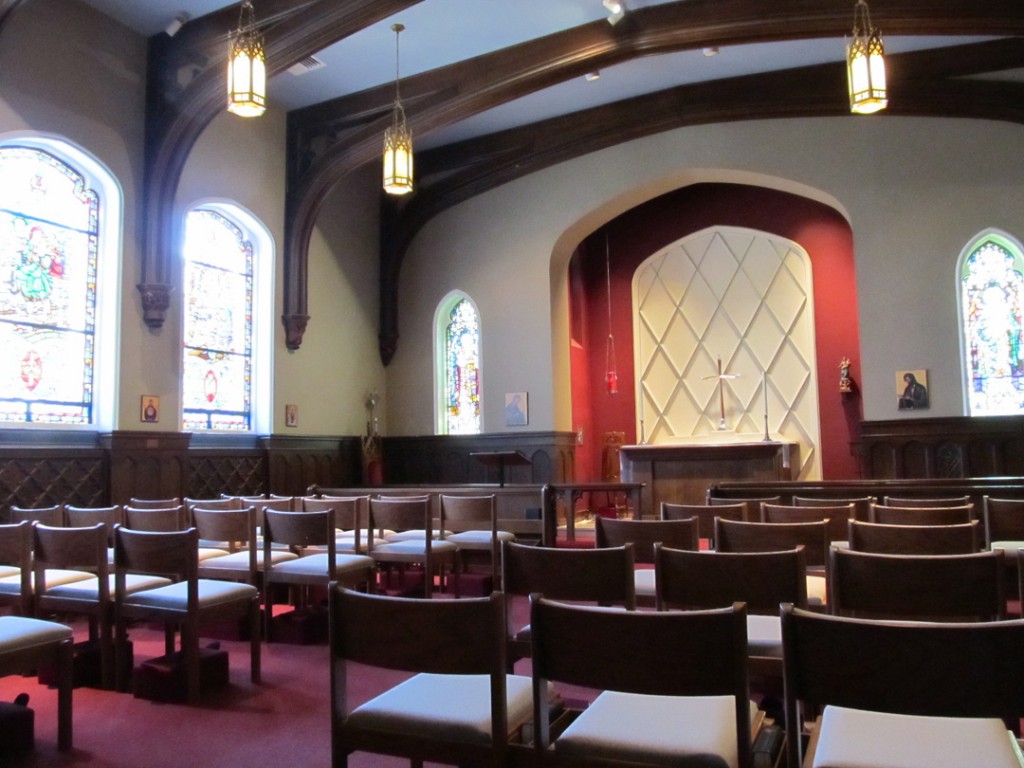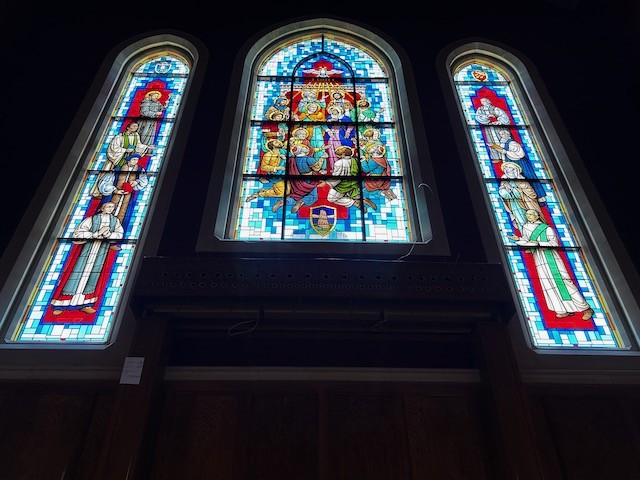A Gothic Cathedral
Gothic architecture originated in central Europe in the period from the 11th to the 16th century. The name Gothic identifies with the ethnic origin of craftsmen who developed stone masonry to the highest level of structural efficiency to be achieved in the world at that time. Slender pointed arches, relatively thin walls and refined details, characteristic of Gothic design, developed from a desire to reduce the quantities of stone and structural weight required to construct large masonry buildings. This resulted in large penetrations through stone walls which could be lined with ornate tracery holding glass, taking advantage of as much natural light as possible. Gothic design was frequently chosen for ecclesiastical structures to express the aspiring nature of religious beliefs. Local availability of stone made it the material of choice. Stone masons of the period reached the highest level of expertise yet achieved in their craft.
Gothic design became the dominant influence for large religious buildings in France and England through the 19th century and, because of the Anglican connection, Gothic design was selected for Episcopal churches throughout the United States in the 19th and 20th centuries.
Grace Cathedral may be described as eclectic Gothic, taking its character from features chosen from a range of Gothic construction.
Grace Cathedral may be described as eclectic Gothic. It takes its character from features chosen from a range of Gothic construction. Medieval or Early English is the significant influence with details from the Decorated and Perpendicular periods. Many of the great cathedrals of Europe have very high, elaborately vaulted stone ceilings. Grace Cathedral departs from this with the use of timber trusses bracketed on hammer beams, a construction most frequently identified with Gothic community buildings and parish churches in Europe. The extensive use of wood contributes greatly to the more intimate feeling of this building when it is compared with all stone structures. The notable character of the Cathedral is dignified simplicity. Extensive use of Kansas Limestone and carved wood accented with bright brass give the worship space a sensation of being warm and alive with strength and sensitivity.
Foundations for the Cathedral were laid starting in 1909 and work continued until 1912 when the exterior was completed. Work on the interior was restarted in 1916 and completed in 1917. On November 25, 1975 the roof and interior of the Cathedral were totally destroyed by fire. Following a five month recovery period work was started on restoration of the structure. Thirty months later in October of 1978 services were being conducted in the building. Installation of stained glass windows and woodwork has been a continuing process since 1978.
Virtual Tour
St. Mary’s Chapel
When the Cathedral was finished in 1917, St. Mary’s Chapel was first consecrated as the McClintock Chapel. The Chapel was the gift of Dr. J. C. McClintock and his wife in memory of his father and mother. This “handsome morning Chapel in the late Tudor or Perpendicular style” served Grace Cathedral for weekday and smaller services for most of the twentieth century.
When the devastating fire engulfed the Cathedral on November 26,1975, many of the Chapel appointments were carried from the burning cathedral and saved: the 1857 altar (now the All Saints Altar in the Cathedral’s East Transept), the brass eagle lectern (now used in the Cathedral), the Baptismal Font (originally in the Bethany College Chapel, now in the Chapel Narthex), and other brass appointments.

On either side of the Chapel Altar are two adoring angels, The Meade Windows, which were given in memory of Emily Jane Meade and John Macky Meade. The small lancette windows in the Chapel Sanctuary are thank offerings, The Kilmer Windows, given “in thanksgiving to God for the safe return from World War II of Charles Benedict Kilmer and Lloyd Lott Kilmer.” The black walnut hand-carved wainscoting on either side of the Altar was made from old pews that stood in the first permanent Grace Church building in Topeka. These windows and the wainscoting survived the fire with some damage.
Consecrated as St. Mary’s Chapel in 1978, all the Santos in the Chapel are devoted to women in the Bible. The triptych of windows on the east wall are (left to right) The Visitation: Elizabeth greeting Mary as she sings the Magnificat; The Flight: the Holy Family’s flight to Egypt; and The Holy Family: Joseph teaching the boy Jesus as Mary looks on. The walnut carvings at the bases of the arches are symbols relating to Mary or the Nativity. A hand-carved figurine of Mary and the Baby Jesus stands on the Sanctuary wall .
Windows of Grace
Prior to the November, 1975 fire… of the countless works of art in Grace Cathedral, many considered the beautiful stained glass windows the most outstanding. When Dean Kaye planned the Cathedral’s interior, he visualized the windows in terms of their teaching value.
To that time, all of the stained glass was a copy of the best 15th century glass. With exceptions, the windows were designed and manufactured by the Von Gerichten Art Glass Studios in Columbus, Ohio.

Since the landmark fire, reconstruction of the windows began soon afterward. In 2002, the last of the planned stained glass windows were put into place. The modern-day replacements were designed and fabricated by the Judson Studios of Los Angeles, California and the Willett Stained Glass Studios of Philadelphia, Pennsylvania.
The Grace Cathedral Chapter of the Daughters of the King decided to record the stained glass windows in a book, “Windows of Grace.” Here, every window is pictured in full color, together with a brief description and the location in the cathedral. Many people have acquired the book not only for personal interest, but for its artistry and historical information. “Windows of Grace” may be ordered from Grace Cathedral, 701 West 8th Ave., Topeka, KS 66603 for $10.
On Pentecost Sunday 2023, Grace Cathedral blessed a new set of Pentecost-themed windows, effectively completing the nearly five-decades-long process of replacing stained glass in the Cathedral.

The windows feature a large central depiction of the events of Pentecost, flanked by several “witnesses” including someone from Topeka, The Rev. Joseph Thompson, who served as Vicar of St. Simon’s Episcopal Church and Deacon of Grace Cathedral, ca. 1906-2003. To commemorate the day, a specially-produced book was offered to attendees. It explains the process behind the making of stained glass and of these windows in particular. It may be viewed below.

 701 SW 8th Ave.
701 SW 8th Ave.